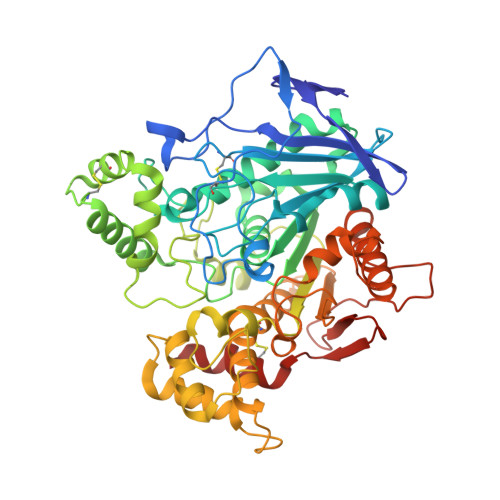From tryptophan-based amides to tertiary amines: Optimization of a butyrylcholinesterase inhibitor series.
Meden, A., Knez, D., Brazzolotto, X., Nachon, F., Dias, J., Svete, J., Stojan, J., Groselj, U., Gobec, S.(2022) Eur J Med Chem 234: 114248-114248
- PubMed: 35299116
- DOI: https://doi.org/10.1016/j.ejmech.2022.114248
- Primary Citation of Related Structures:
7BO3, 7BO4 - PubMed Abstract:
Lead optimization of a series of tryptophan-based nanomolar butyrylcholinesterase (BChE) inhibitors led to tertiary amines as highly potent, achiral, sp 3 -rich analogues with better synthetic accessibility and high selectivity over acetylcholinesterase (one to ten thousandfold). Taking it one step further, the introduction of a carbamate warhead on the well-explored reversible scaffold allowed conversion to pseudoirreversible inhibitors that bound covalently to BChE and prolonged the duration of inhibition (half-life of 14.8 h for compound 45a-carbamoylated enzyme). Additionally, N-hydroxyindole was discovered as a novel leaving group chemotype. The covalent mechanism of action was confirmed by time-dependency experiments, progress curve analysis, and indirectly by co-crystallization with the human recombinant enzyme. Two crystal structures of BChE-inhibitor complexes were solved and coupled with the supporting molecular dynamics simulations increased our understanding of the structure-activity relationship, while also providing the necessary structural information for future optimization of this series. Overall, this research demonstates the high versatility and potential of this series of BChE inhibitors.
- University of Ljubljana, Faculty of Pharmacy, Aškerčeva 7, SI-1000, Ljubljana, Slovenia.
Organizational Affiliation:
























